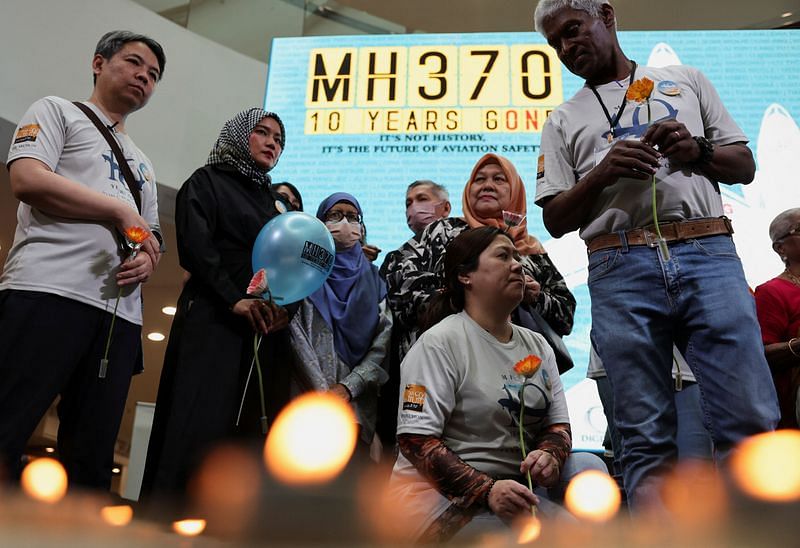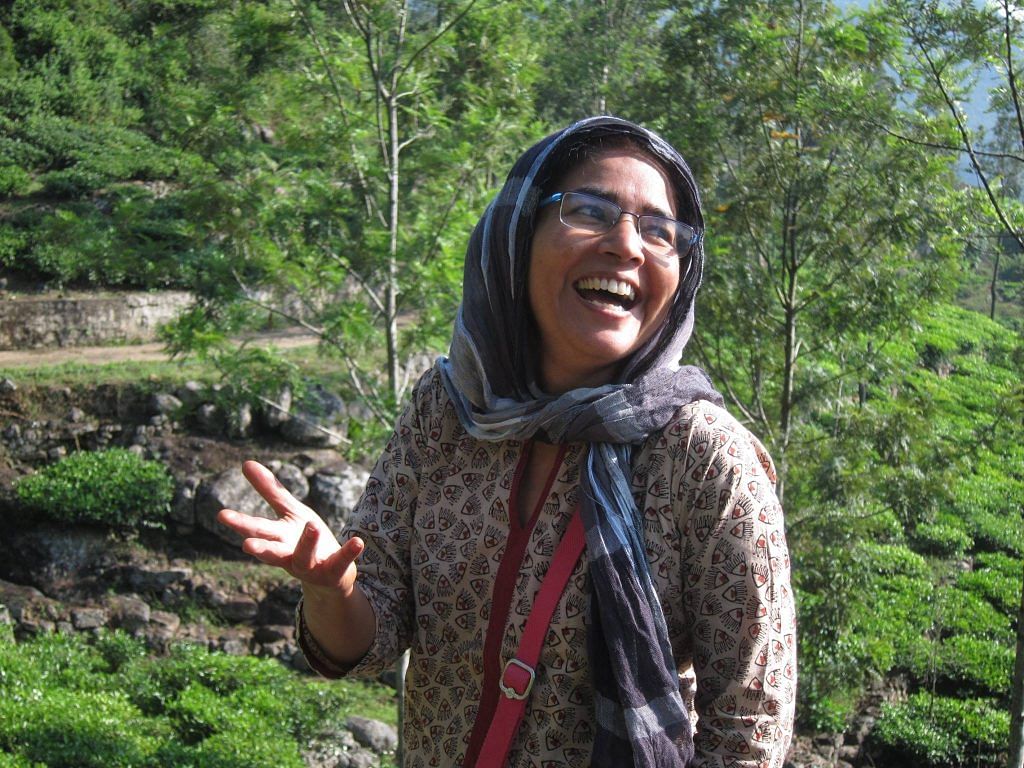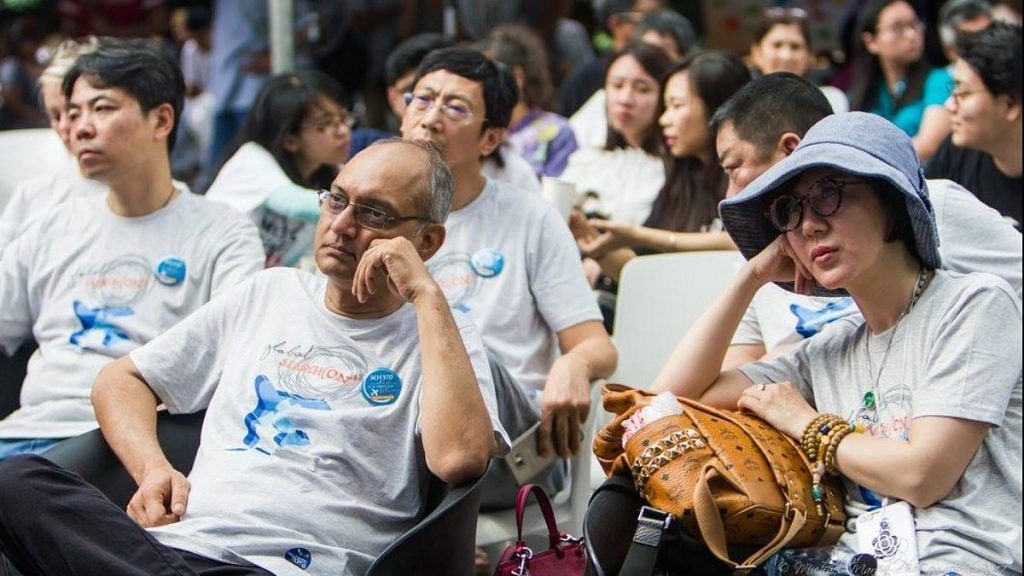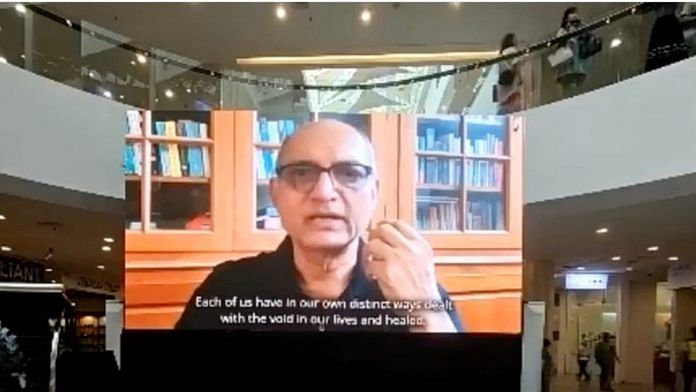New Delhi: For ten years now, KS Narendran has been reliving the most painful experience of his life—the disappearance of his wife. She was on board the ill-fated Malaysia Airlines Flight MH370, which vanished into darkness over the South China Sea on 8 March 2014. As the 10th anniversary approaches, there are few answers and Narendran is exhausted with responding to the same questions. “The tongue runs dry, and a fatigue sets in,” he said.
Since he lost Chandrika Sharma, his wife of 25 years, Narendran has extensively documented his thoughts in a blog. He started writing as soon as the Beijing-bound plane disappeared and his last post was on 3 March, when families demanded a re-opening of the investigation. His blog entries are a chronicle of not just grief and loss but the torment of searching for answers that refuse to come. Narendran has also been remarkably open, sharing his feelings and experiences with the media and offering glimpses into his private thoughts as he mourned his wife and kept his small family together.
The disappearance of MH370 remains an unsolved puzzle, despite multiple investigations, years-long global search operations across continents, and all kinds of wild conspiracy theories. A sense of closure still eludes the hundreds of families who lost loved ones on the flight. Among them were five Indian citizens: Chandrika Sharma, an NGO professional from Chennai; Chetna Kolekar, Swanand Kolekar, and Vinod Kolekar from Mumbai, who were traveling to Beijing to visit their family member Samved Kolekar, then studying physics in China; and Kranti Shirsath, a chemistry teacher from Pune.

Also Read: Bollywood shows violence & pain but does it understand grief? It’s beginning to
The loss, the questions, the anger
Narendran was yet to blink his eyes open on the early morning of 8 March 2014 when he was jolted awake by a call from his wife’s colleague, who asked if he had seen the news yet—the flight Chandrika was on couldn’t be traced.
Stumbling out of bed, Narendran switched on the television to find that MH370 hadn’t landed in Beijing at its scheduled time of 6:30 am. No country could account for the missing plane’s whereabouts.
To keep track of the news, Narendran limited himself to press conferences, avoiding any other coverage of the event, which at that point was relentless. He consoled himself with thoughts of his wife’s strength, courage, and good deeds.
With each passing day, Narendran’s hope ebbed, until it was almost completely extinguished by a one-line text message: “We deeply regret that we have to assume beyond any reasonable doubt that MH370 has been lost and that none of those on board survived.”

Silence engulfed Narendran’s household, a family unaccustomed to overt displays of grief. “My vipassana experience helped me approach the situation with relative calm and equanimity,” Narendran said.
Two days after the Malaysian authorities’ text message, Narendran revealed his inner turmoil to the world through a blog post written on 26 March 2014. “There are any number of inner dialogues while walking, talking, resting, and when I am otherwise restless with this phase of no clarity, no plans, and nothing engaging to look forward to,” he wrote.
Narendran’s writings reflect a conscious effort to maintain emotional restraint, but what also comes through is the inner battle to stay grounded amid the overwhelming unfairness of it all. They offer a rare window into a grieving mind, free from the constraints of interview questions that dictate the flow of thought.
Initially posted on Facebook, Narendran’s observations elicited emotional responses from friends, family, and acquaintances who were glued to their screens and newspapers, hoping for news about Chandrika.
On a post reflecting on the six months that had then passed since the flight’s disappearance, a friend praised Narendran for his philosophical approach to personal loss. “You have always made us think, and this piece is no different. Your personal loss, a great loss, a loss that is irreparable, you have made it out to be a matter of fact and that of something to view philosophically,” the comment said. “This is incredible. I only hope we have a fraction of your sagacity and more importantly, your equanimity.”
Yet, even though Narendran intended to document the grieving process philosophically, his love and longing for his wife spill out in some posts. In one, he describes how he and his daughter are preparing for the future, keeping hope aside.
“My daughter and I are more or less reconciled to Chandrika’s long leave of absence, where we have to carry on, drawing from our collective memory of what she symbolised,” he wrote. “We are agreed that she may never be seen again.”
Other grieving family members have not been so outspoken. Samved Kolekar, who lost his entire family in the MH370 disappearance, has never spoken to the media. Now a professor at the Indian Institute of Astrophysics in Bengaluru, he didn’t respond to requests for an interview sent by ThePrint. Prahlad Shirsath, who lost his wife in the tragedy, is currently in Ethiopia and could not be reached for comment.
Search operations
The one-line text announcing the presumed demise of M370 passengers didn’t entirely destroy hopes of Chandrika’s safe return among her family members.
As rescue operations, led by Australia, embarked on the ambitious task of searching the surface of the Indian Ocean, Narendran and his family clung to each other, each dealing with the uncertainty in their own way.
“The family has had to reconcile to the reality of Chandrika’s absence, each in their own way – some, quite resolute in their belief in a miracle and Chandrika’s safe return, some others more muted in their hopes. A few have relied on the fact there has been no physical evidence of a crash and therefore concluded that the aircraft with passengers has been spirited away for a bargain,” Narendran wrote on 2 April 2014, almost a month after the crash. “As the days have dragged on, doubts and fragility leak through the brave stances, often accompanied by pools of tears, and end with reaffirmations of faith that all will be well.”
The search operation, meanwhile, yielded no conclusive answers. Surface and underwater operations over the years yielded neither the plane’s body nor the black box. A few scattered fragments—part of a wing, personal belongings—have not been enough to piece together what exactly happened after one of the pilots uttered his last known words: “Good night Malaysian three seven zero”.

There were all kinds of theories, but no substantial evidence. Flight 370 hadn’t simply vanished. Malaysian military radars determined that the plane had made a U-turn, crossed over the Malaysian peninsula again, only to be lost again. Back then, mass murder-suicide by the pilot or a hijacking weren’t ruled out. Even in later investigations, Malaysian authorities cleared everyone on board, but didn’t rule out foul play by an outside hand.
Those left behind had to find a way to carry on. Narendra recalled that when rescue efforts yielded no results, he and his daughter finally sat down to discuss the worst-case scenario: what if Chandrika never came back? As they spoke, Narendran glanced at his phone. His calendar still showed Chandrika in Malaysia, followed by a trip to Rome. He chose to leave the calendar as it was.
Also Read: ‘Air India ki flight mat lo’ — how Canadian neglect led up to Kanishka bombing 38 yrs ago
Moving on
For months after the disappearance, Narendran said he would rush to answer the phone every time it rang, with the inescapable feeling that his wife was calling. The family has held off hosting a memorial service for Chandrika.
Sometimes, Narendra would let his emotions flow while writing and then self-reflexively exercise restraint. “I am not a mushy sentimentalist,” he wrote in September 2014. “The over-grown stoic in me seldom made time for such a part. What I miss most in my intimate partner is a friend and a foil, whose expressiveness made up for my lack of it, and whose yen for thoughtful action ensured that life was never frozen, stagnant and lost in a sea of words.”
As Narendran held back his emotions, his blog posts focused more on news updates regarding the investigation and anger over the unanswered questions. He found support through Voice370, a platform where grieving families shared their pain, sadness, and anger. However, this network is no longer as active as it once was.
“In the initial years after the loss of the aircraft, the shared sense of loss and grief was a strong glue. As families began to cope better, started rebuilding their lives and find other avenues for expression and bonding, the association became more a vehicle to engage the authorities,” Narendran said. “MH families were geographically distributed over many countries and time zones and an ongoing connection was a challenge.”
Chandrika’s absence has created a vacuum in the family, but they have become more tight-knit to cope with it, Narendran said. His daughter, Meghna, is based in Bengaluru, and his mother lives with him in Chennai. They have largely relinquished hope of Chandrika’s return after holding on to it as long as they could. But that doesn’t mean they don’t want answers.
On 3 March, Narendran participated virtually in a meeting in Kuala Lumpur, pushing to re-open the search operations for MH370. “I don’t know what good reopening the investigation can bring. Cover up or not, the authorities owe us some answers,” he said. “And until they come, a sense of restlessness will continue.”
(Edited by Asavari Singh)



